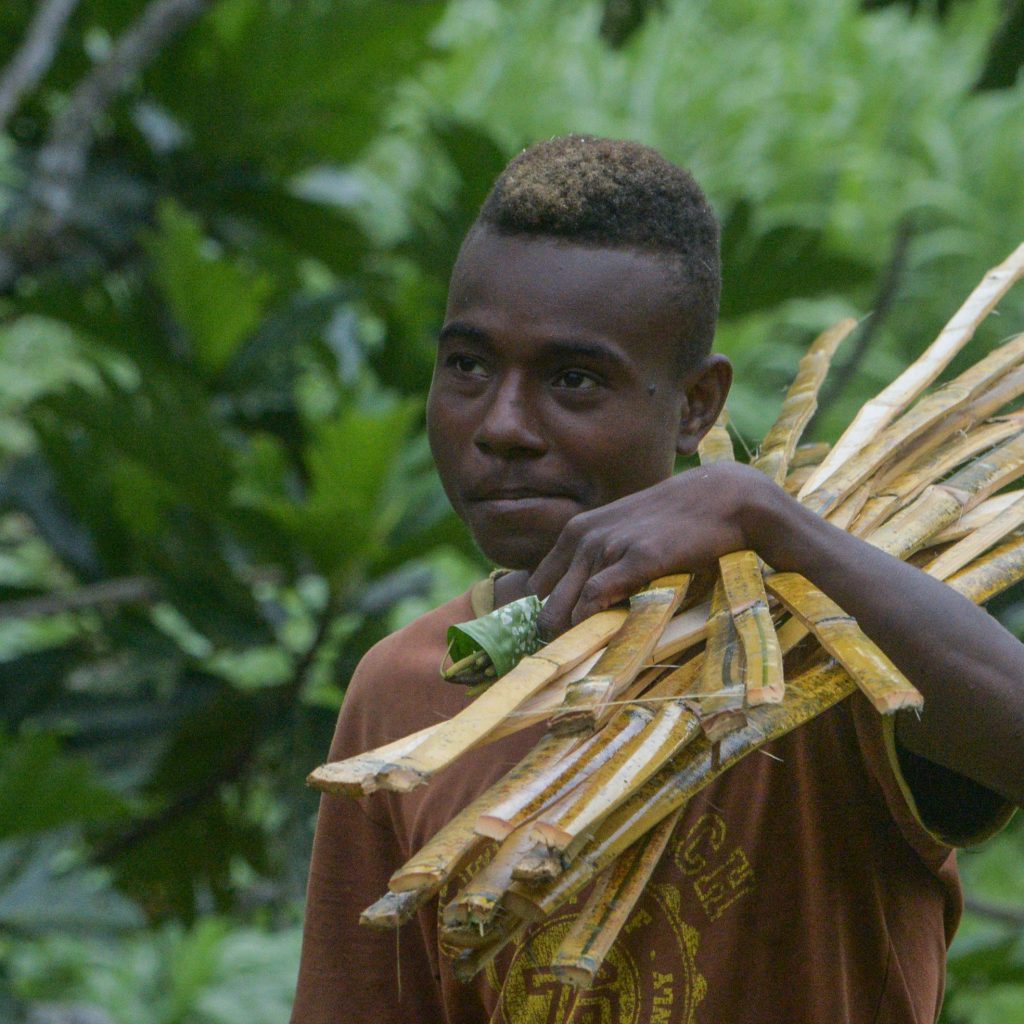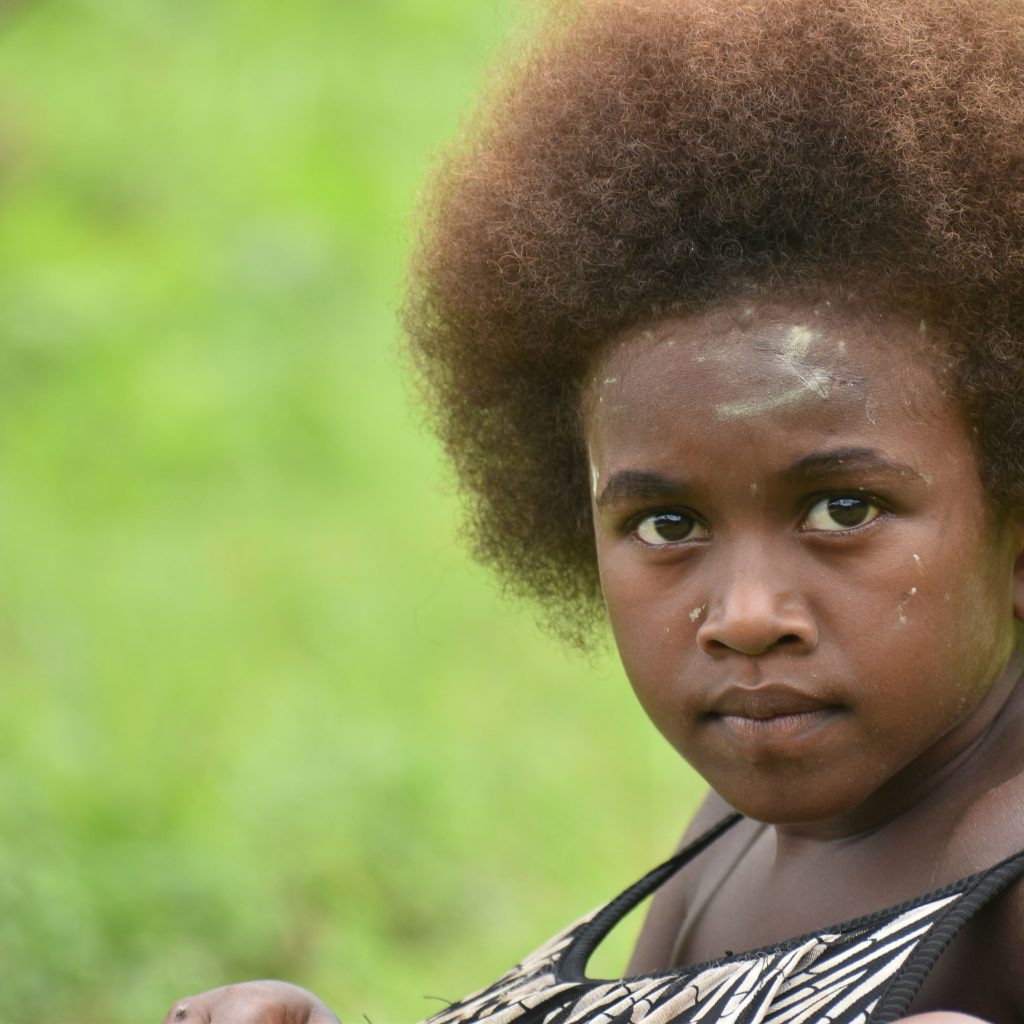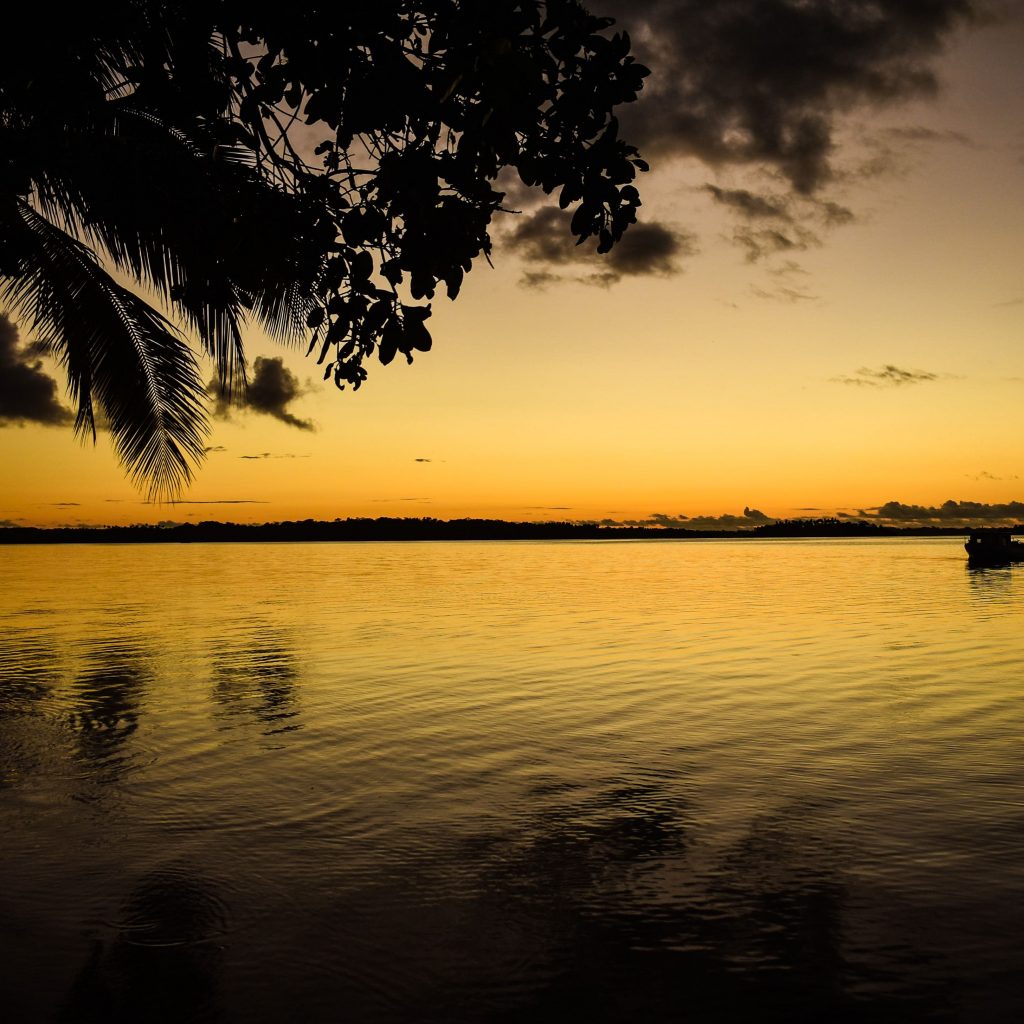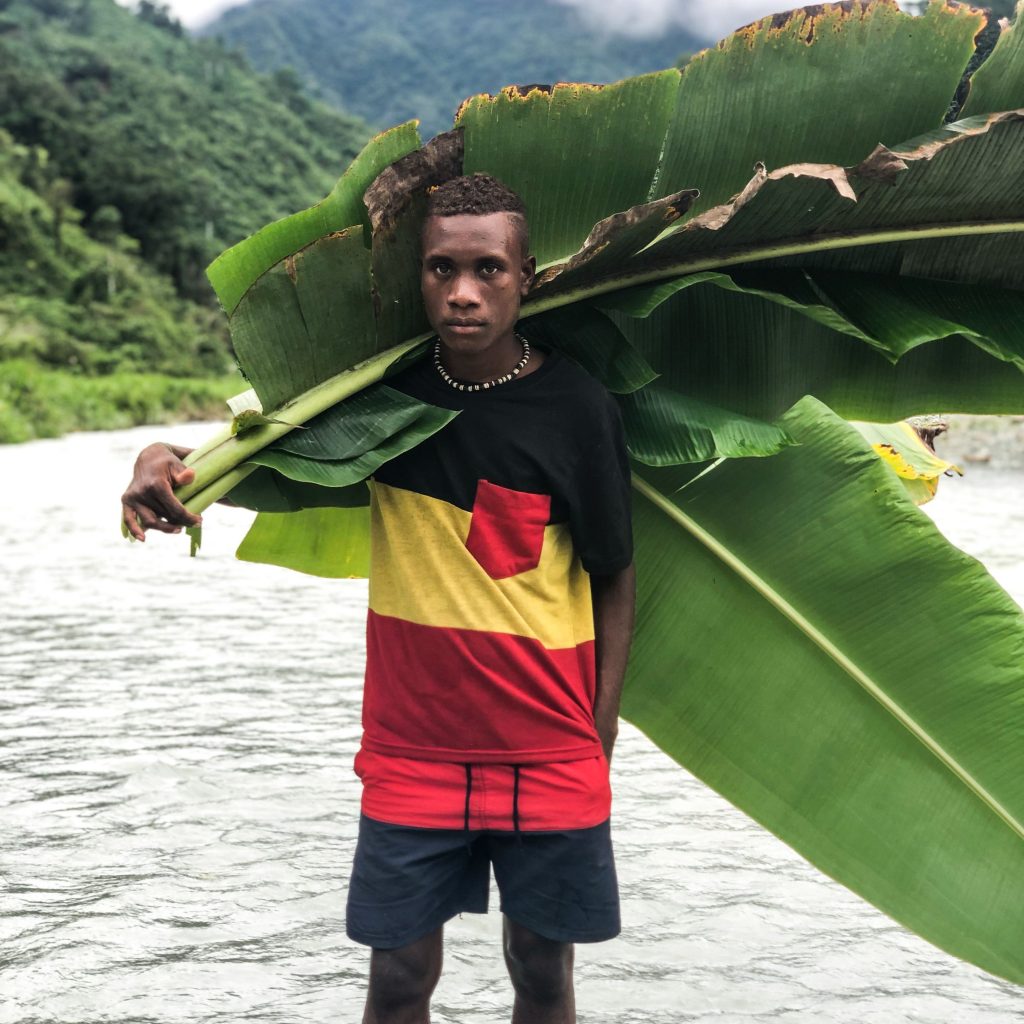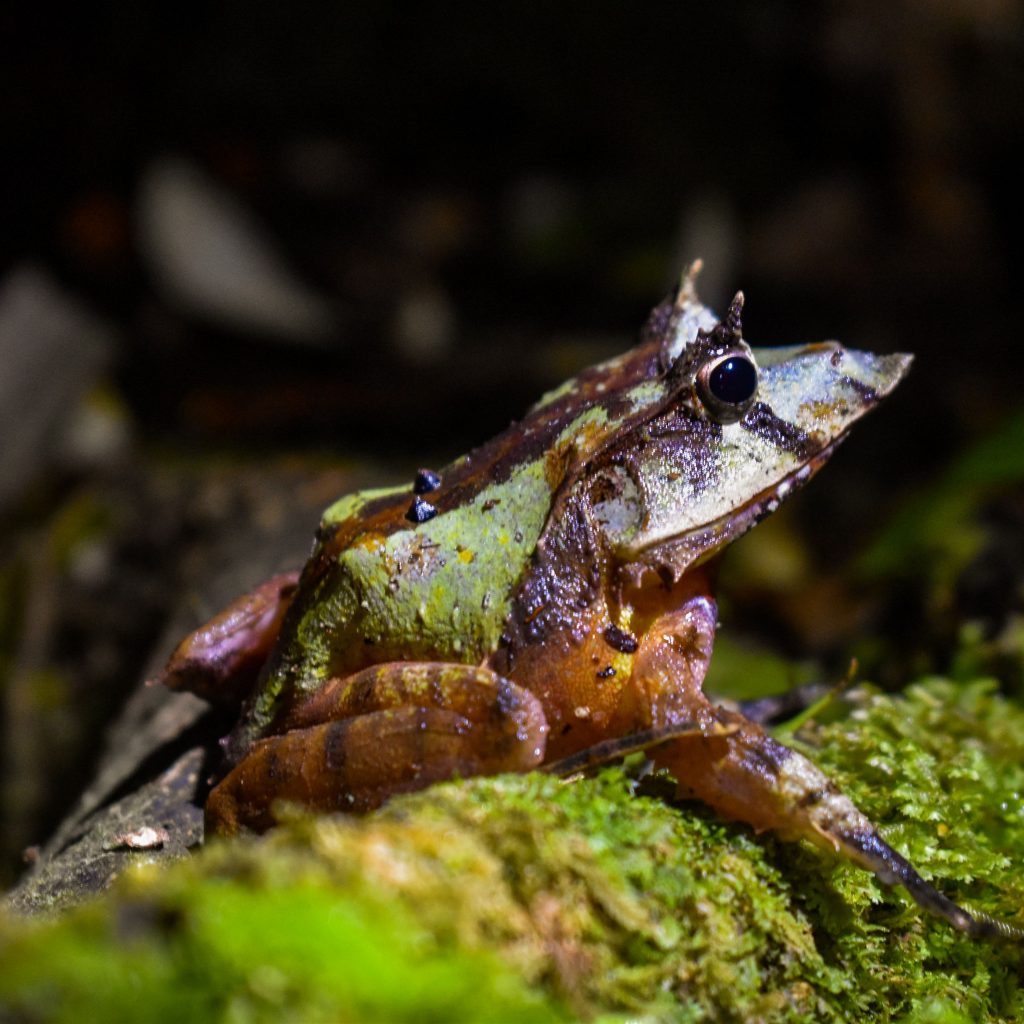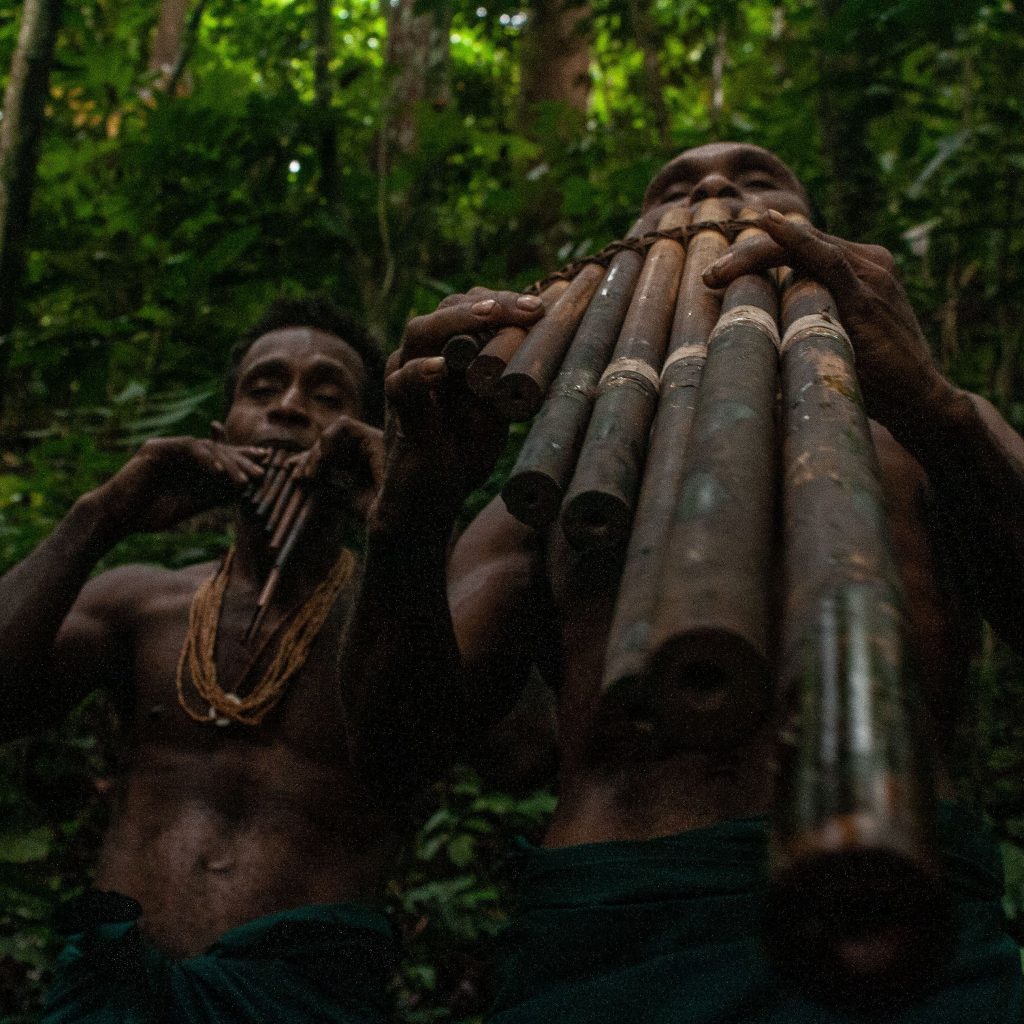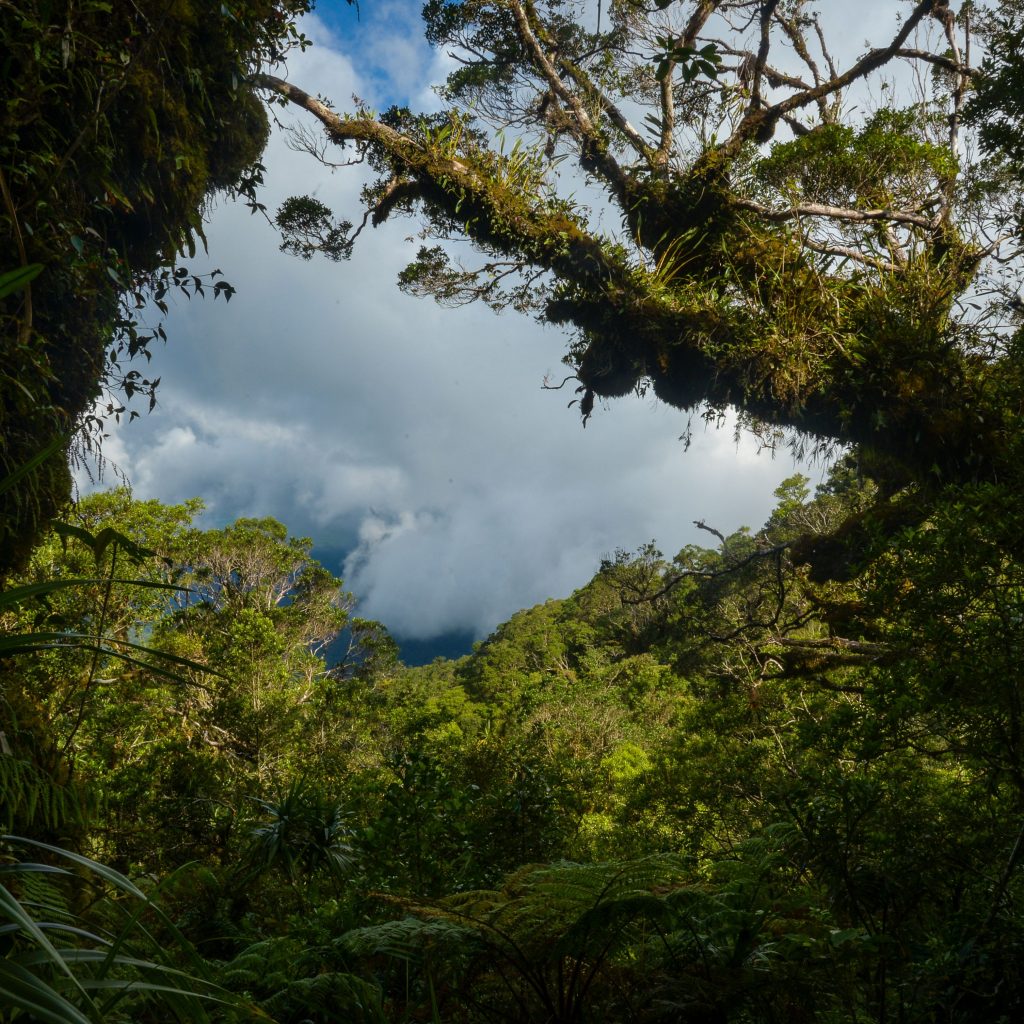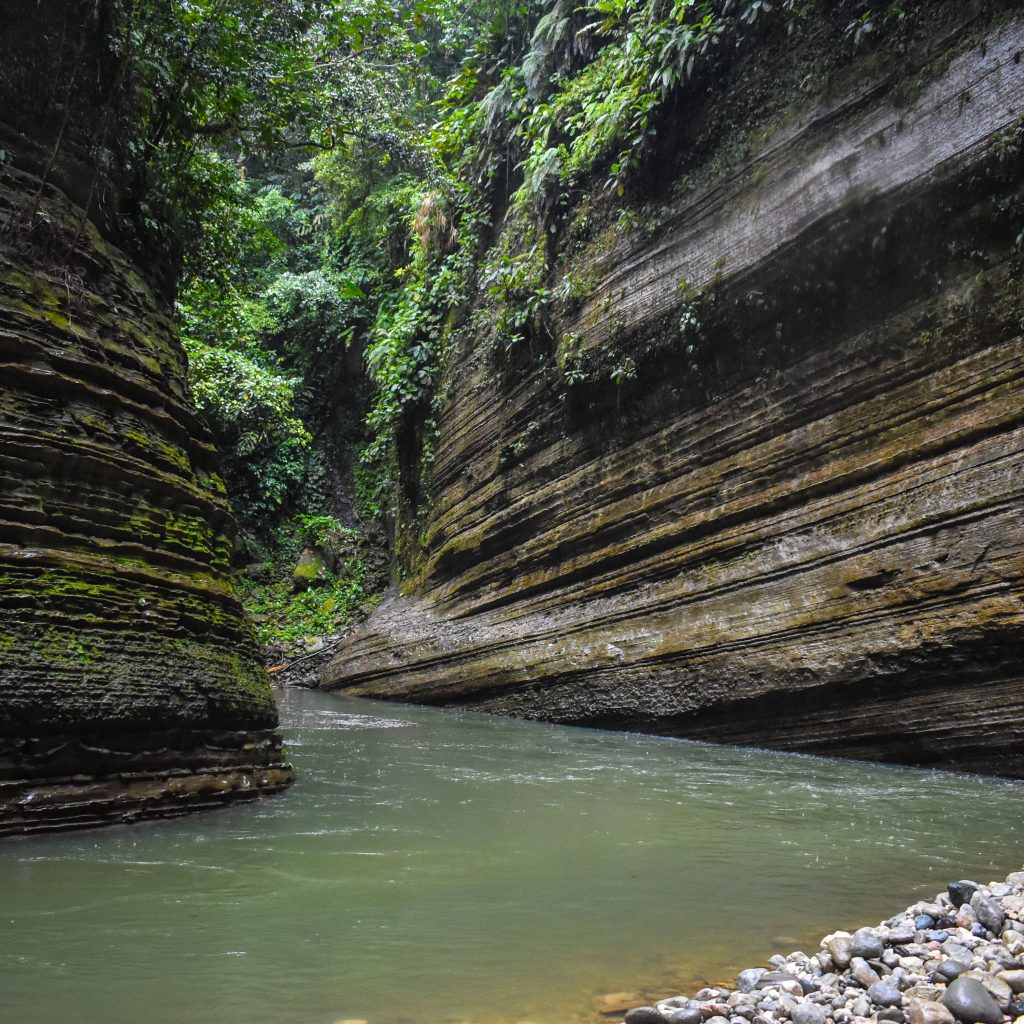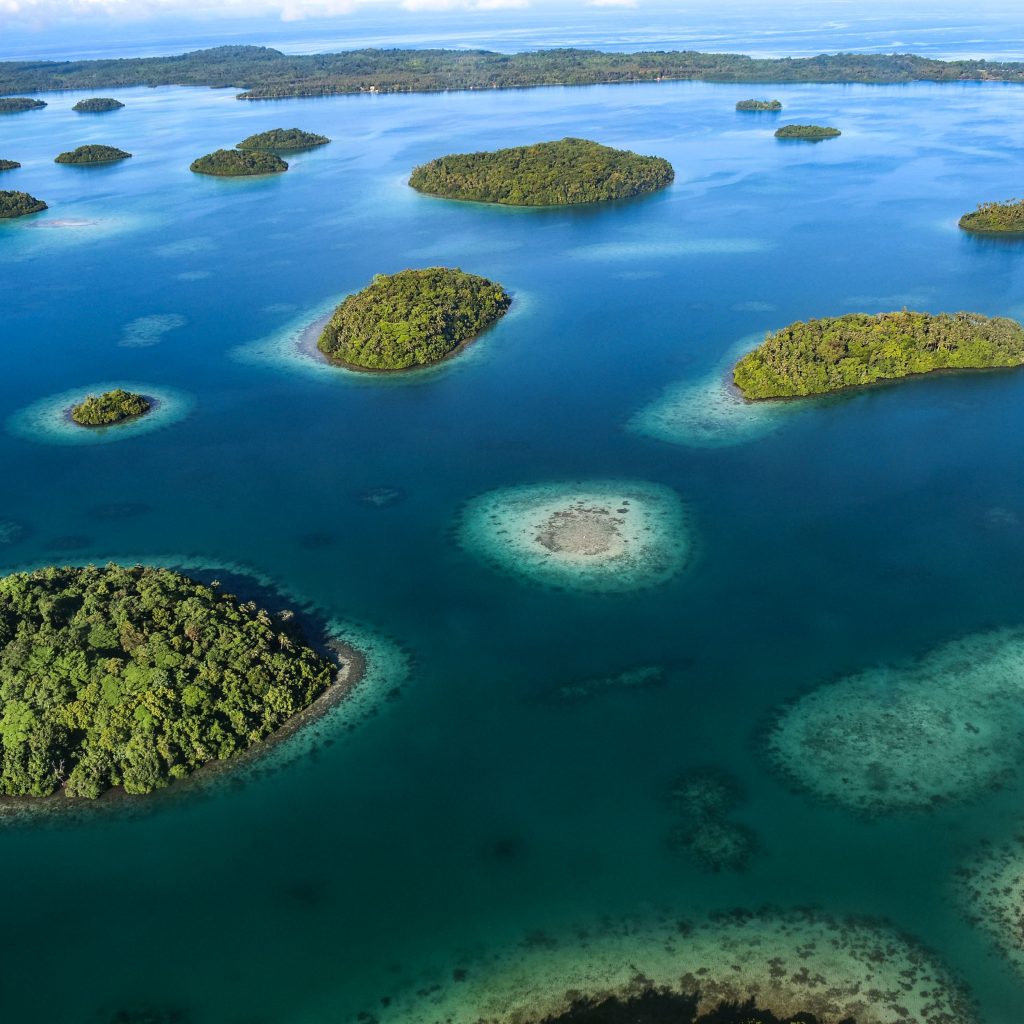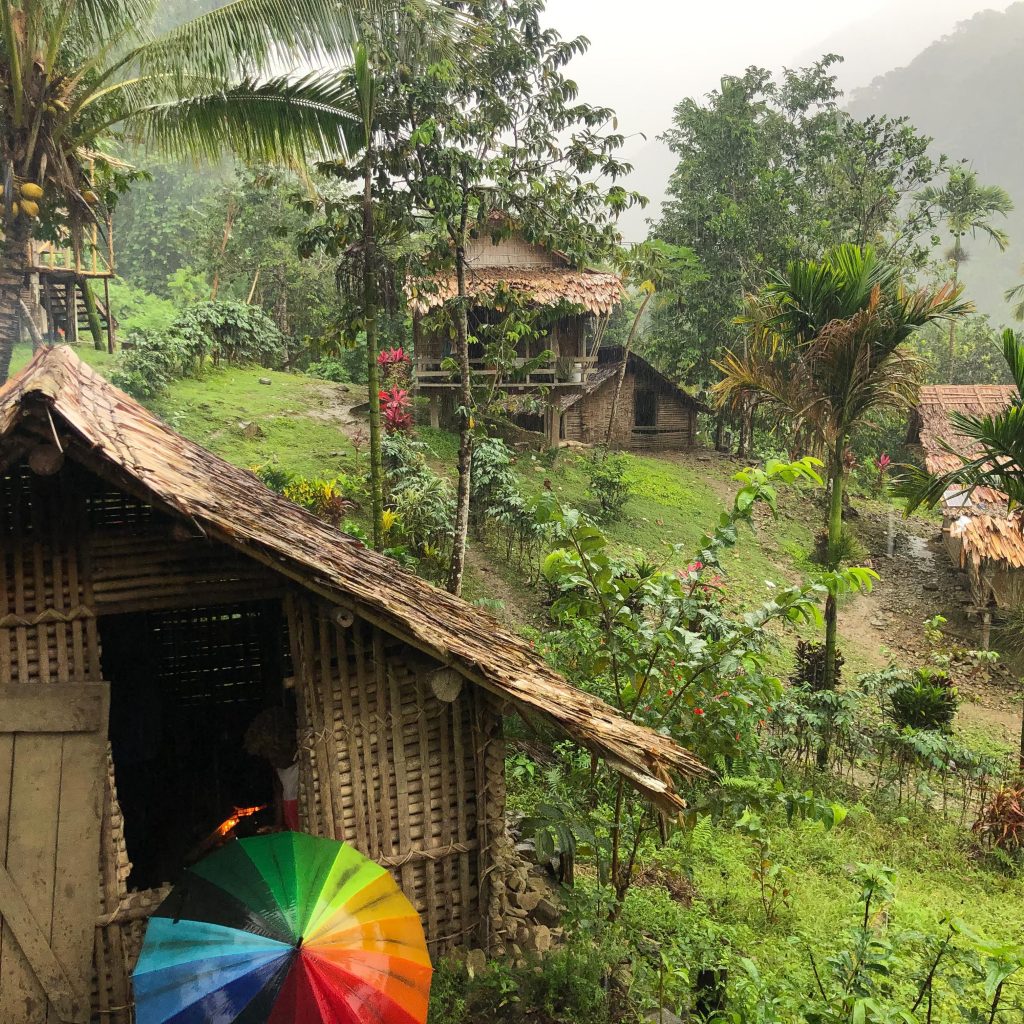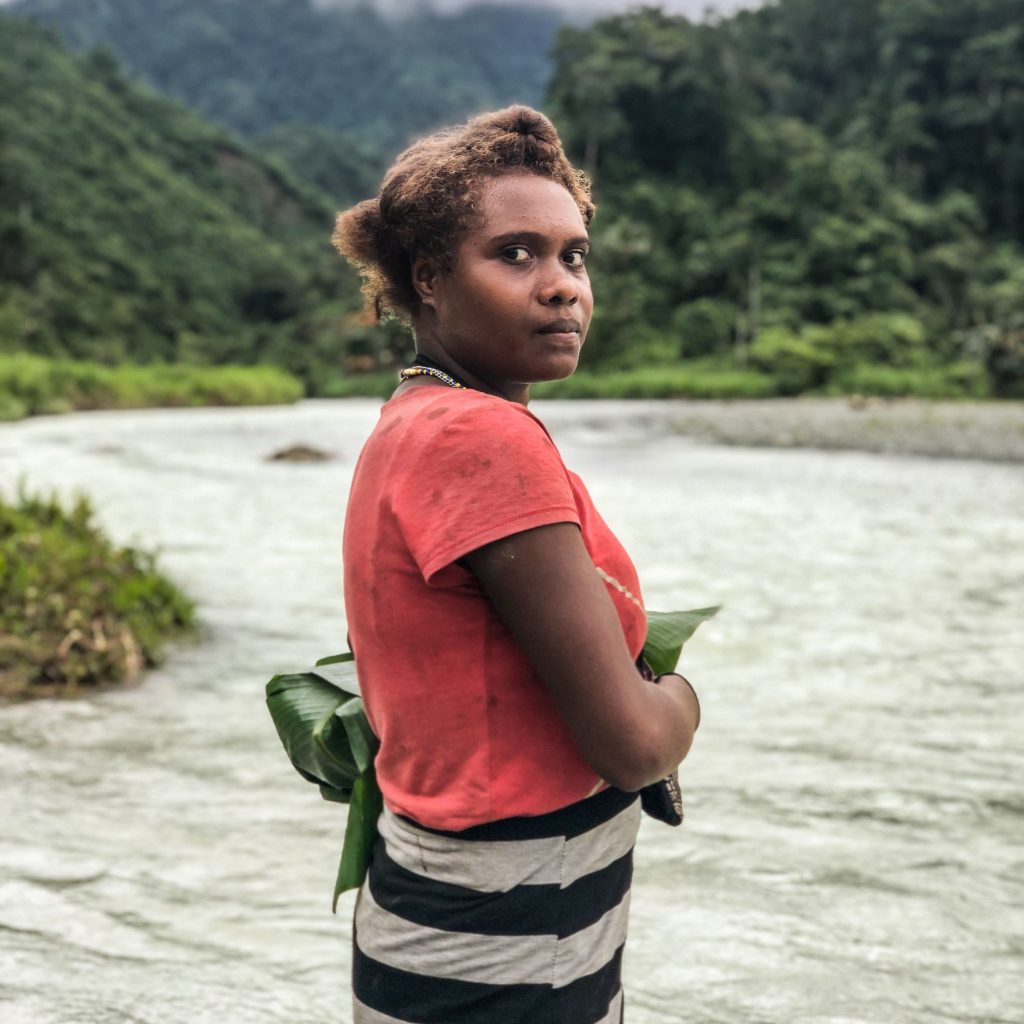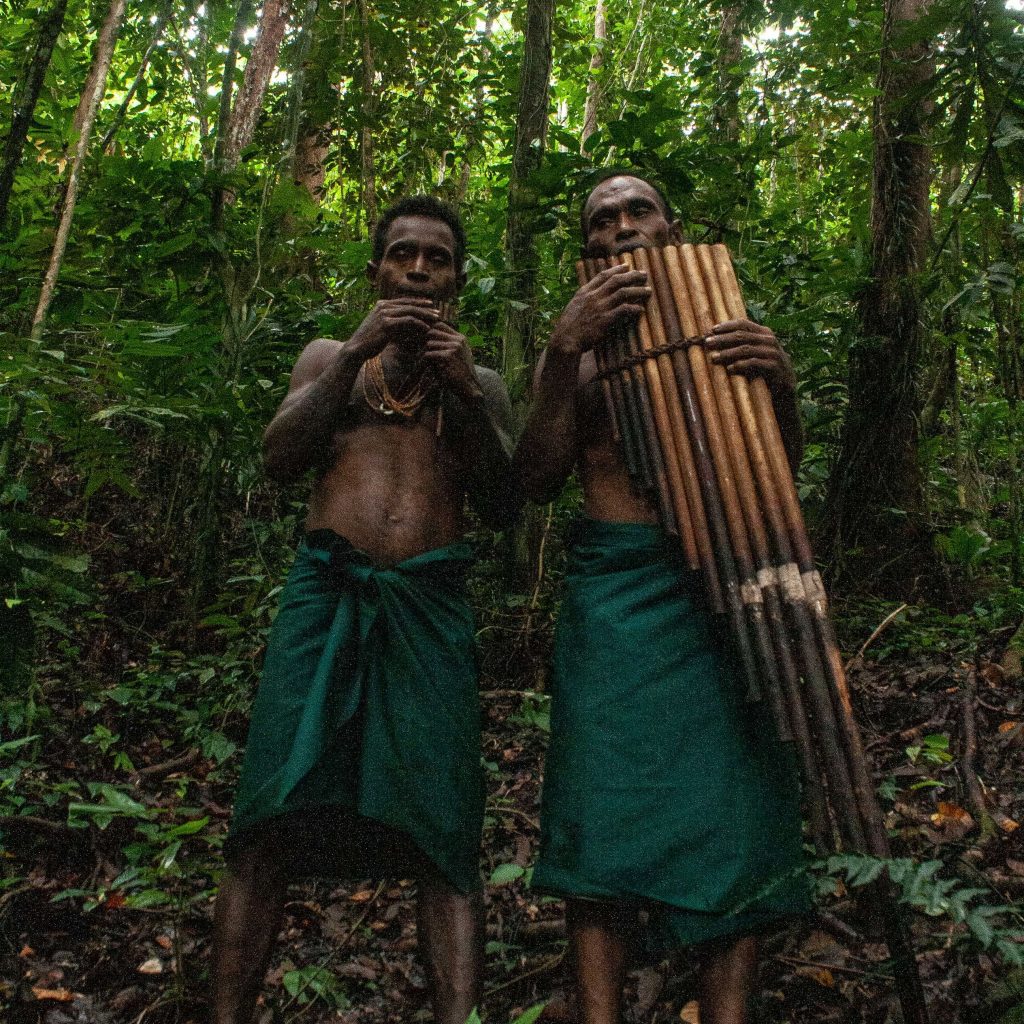In 1568 the Spaniard Álavaro de Mendaña first set eyes on the verdant green rolling hills and ridgelines of a South Pacific island chain. He later named this island – part of the northern chain in the double-chained archipelago after his wife, Ysabela (Santa Isabel Island). Believing that he may have found the source of gold for the biblical King Solomon’s riches, Mendana named the archipelago the Solomon Islands.
Exploration of the archipelago’s major islands and many smaller offshore islands revealed a diverse Indigenous population that had been there for thousands of years. Primarily hunter- gatherers who depended on marine resources, over time these peoples had ventured deep into the interiors of the larger islands and established villages, shrines, and ‘tabu’ sites. Evidence of human occupation is scattered throughout these interior, high-elevation forests. Remnants of built up foundations of former forts and villages, and graves adorned with shells and traditional money can be found along the elevated ridges of Guadalcanal, Malaita, Makira, Kolombangara, Vangunu and Choiseul islands. Elders today say that building along these narrow spaces offered protection and fortifications that otherwise open and flat areas could not, and defence from the head-hunting raids that beset many islanders in the past.
The high and rugged peaks of the tallest islands offered both protection and diverse and valued resources for resident human populations. Yet these unique forests contained merely the tip of the vast wealth of biological diversity that spanned across the archipelago, diversity inextricably linked to the biocultural diversity of the myriad of human languages and cultures populating the islands.
Communities and cultures across the archipelago have maintained a deep spiritual connection to nature and place, and in particular, to the often sacred, historic, and biologically unique forest of the mountainous regions. Although a growing colonial and missionary presence in the early 1900s prompted many villages to leave the protections of the interior forests and resettle along the coasts, ties to the high elevation forests persisted.
More recently, decimation of many lowland forests has left the intact upper reaches of many islands as a precious wellspring of vital cultural, physical and ecological wellbeing.
In an archipelago known globally for its unique flora and fauna, nowhere has the effect of habitat-influenced species diversification more than in the cool, constantly humid conditions of cloud-shrouded high elevation forests. These ‘Sky Islands’—a term first used to describe unique habitats associated with isolated mountaintops rising above the ‘sea’ of the Arizona desert—are the isolated mountaintops where populations of a wide array of species adapt to the surrounding, insular environment. With diverse ecological factors driving adaptation amongst ‘sky island’ species, over time, entirely new life forms emerge from this other-worldly high elevation cloud forest.
Solomon Islanders have known about this for thousands of years, but knowledge and connection to these places were largely lost. Only recently has this knowledge—coupled with tools of western science—come again to the forefront.
Visitors to the Sky Islands marvel at its magic and mystery. These rugged mountainous spaces are the head and heart, the pulse of the island. It’s a place where rhythm, grace and mystery persist, and sends breath and life and revitalisation into the people and landscapes.
From the coast, the high volcanic islands extend like a tapestry of grey green textures. Reaching into the clouds, dense canopies sporadically intersect overheads, shielding the understory from the sun’s scorching rays, creating idyllic microclimates. Here moss alies such as bryophytes and lichens and many creepers or epiphytic plants clinch to trees and vegetation that grow along high ridges and in wet gullies. Amounts of wetness within these forests fluctuate between cold and damp situations, and tepid, parched and breezy conditions, resulting in “eternal spring-like climes” unlike the tropical and muggy lowland forests below.
Colourful orchids delight the understory, creating a carpet of greenery, dotted with many colours and shapes, a tapestry of intricate patterns much like a mother’s neatly woven mat. Sky Islands are also critical sources of freshwater, and the source of many major streams.
Ecological niches created along elevation gradients, and the isolation of these high oceanic islands has driven crazy variation amongst its resident wildlife inhabitants. This has led to the creation of many endemic species, or species that are found in a particular location and found nowhere else on earth. As a result of Sky Islands or high oceanic mountains (some greater 2000m in elevation) on the large islands in the Solomon Islands Archipelago, and their geographic location (closer to New Guinea), there are higher rates of endemism amongst species here than anywhere else in the entire South Pacific. A high percentage of endemic and native species coexist here lacing themselves into an amazingly complex web of life, connected through and with other living components of the environment.
Beady eyes follow your every move as you walk through a maze of evergreen along a Sky Island trail. Dawn choruses awake you, with frogs squawking, birds singing, and insects whistling, calling out for a mate, for company. But if there is any vertebrate that would be a representative flagship of montane or mountain forests, then it should be a frog! They are the most abundant vertebrate of the Sky Islands systems in the Solomon Islands. The most common being the tiny shrub frogs, Elegant sticky-toed frog (Cornufer elegans), and Fauro sticky-toed frog (C. vertebralis), and even the larger terrestrial Malukuna webbed frog (C. malukunu). The original specimen or holotype of the Malukuna webbed frog was collected in the now-abandoned mountain village of Malukuna, in Central Malango District on Guadalcanal Island.
Indeed, many frog species of Sky Islands remain elusive, and some new to science. Other animals such as giant endemic tree rats crawl in the canopies making large nests much like eagles do, large slow-moving arboreal monkey-tailed skinks move in the understories and high in strangler figs.
Yet more attractive to humans and tourism have been the birds. At least 44 percent of all birds in the Solomon Islands are endemic. Many of these occupy the Sky Islands. Perhaps, none is more sought-after to birdwatchers than the vibrant and enigmatic Moustache kingfisher, which is only found in the highlands of Guadalcanal above 1,300m elevation, and nowhere else on earth.
Sky Islands continue to contribute significant amounts of natural resources to the welfare of Indigenous peoples. The forests and rivers provide everything for a subsistence life such as materials to build traditional houses, many of which can still be seen in the remote recesses of the interior of Guadalcanal and Malaita. Unlike, high stilt houses common along the coast, mountain houses come with intricately designed walls and are structured low to the ground. Almost all are without windows, except for a low door at both ends. Many have a fireplace inside the house to warm the interior during cool nights.
The forests also provide materials and bamboo to make for musical instruments, adding an artistic and social learning dimension achieved by observation, practice, and storytelling. Tuned by adjusting the bamboo lengths, these musical instruments produce melodic harmonies that are characteristic of traditional Solomon Islands music.
The allure of the Sky Islands is only complemented by the dread of losing these special areas, as unprecedented rates of deforestation occur in the Solomon Islands, caused by expanding villages, agricultural pursuits, and especially industrial logging. The latter is by far the largest cause of habitat loss, and deforestation in the country, where more and more, high ridges are now being encroached upon. This is having a tremendous impact on flora and fauna, and waterways by increasing suspended solids and sedimentation, reducing accessibility to clean water, and negatively impacting forest-dependent communities.
Yet, in recent years, there has been a greater understanding of the importance of protecting and conserving Sky Islands, by understanding and exploring the sequence of interactions that these spaces provide not only to biodiversity, but more so to human wellbeing, language, story, history, and culture. If we triumph in communicating the necessity of protecting Sky Islands, and explore economic opportunities for protected these intact forests, perhaps we have a chance at ensuring that these connections, both biological and spiritual, may hold for future generations.
About the writer: For Dr Patrick Pikacha, a childhood game of hunting for birds and being curious about animals and the environment is his daily job today. Patrick is currently a Senior Lecturer at the Pacific Adventist University in Port Moresby, Papua New Guinea, and assists the environmental management efforts of Ecological Solutions (Solomon Islands), an Indigenous green organisation in Solomon Islands.
Photographers featured in the gallery include Daniel Kakadi, Zahiyd Namo, Daniel Lim and Patrick Makau.
This article first appeared in Solomons, the inflight magazine for Solomon Airlines.

